#Horse breeding
Explore tagged Tumblr posts
Text

Zaniskari
#zaniskari#zanskari#zanskar river#ladakh#india#horse#horses#working animals#workhorse#horse breeds#horse breeding#mountain horse#pony#wikipedia#wikipedia pictures#nature#animals
71 notes
·
View notes
Text
Are we still breeding or are we just multiplying?
At the VZAP general meeting, the agricultural scientist Andreas Perner gave an interesting lecture on current problems in purebred Arabian breeding, which we used as an opportunity for the following interview. This is about undesirable developments in Arabian breeding, which have arisen primarily through specialization and selection on individual characteristics, and he sees parallels in cattle breeding where the changes are scientifically substantiated.
IN THE FOCUS: Mr. Perner, in your presentation at the VZAP general meeting you pointed out some parallels that exist between cattle and horse breeding. Why should we concern ourselves with cattle when we are actually interested in horses?
Andreas Perner: Because there are numerous parallels. The primitive cattle were characterized by an enormous chest cavity with plenty of space for the organs, relatively fine legs and a pelvic shape with a high sacrum so that birth could proceed quickly. Through breeding selection, a major change in this appearance has taken place over the last 100 years, including extreme specialization in beef and dairy cattle. Since cows as farm animals have long been the focus of science, one also has easy access to data, e.g. milk yield, slaughter weight, but also bone measurements, etc., which can also be used to document such changes. In animal breeding, a distinction is made between two constitution types: the asthenic and the athletic. The representatives of the Holstein cattle, a highly specialized breed of dairy cattle, today almost exclusively belong to the asthenic constitutional type: large, tall and narrow, i.e. less space in the chest for the organs, rather poor feed conversion, etc. Male calves of this breed are so weak in the muscle development that they no longer have any economic (slaughter) value. Before this extreme specialization in milk production, this breed corresponded to a dual-purpose cattle (milk and meat) and thus more of the athletic constitution type, which has become very rare today. One can definitely draw parallels here with Arabian breeding, where the Arabian show horse was bred through specialization – and became also an asthenic, tall, long-legged, with little depth to the trunk. And among Arabians, too, the athlete, the medium-sized, broad, deep-rumped Arabian of the “old type” who is also a good feed converter, is becoming increasingly rare. From a population genetic point of view, this is a major catastrophe and countermeasures must be taken.
IN THE FOCUS: If we ignore the outside appearance, i.e. the conformation – are there any other changes that have occurred as a result of this specialization?
A. P.: In the last 30-40 years, dairy cattle have increasingly been bred for maximum performance (milk production) in the young animals, i.e. there has been conscious selection for early maturity. This has resulted in serious changes in the animals: through selection for early maturity, the useful life has been extremely shortened due to high susceptibility to disease and fertility problems – the latter is the main cause of loss in cattle breeding. This can also be proven with figures: In Germany today a cow has an average of 2.4 calves, but biologically it can have 14-15 calves. The “useful life” of cows is now at an all-time low. The selection for early maturity also has an impact on the quality of the claws: the early maturing animals need claw care three times a year, because the claws are soft and grow very quickly. In contrast, slow, long-lasting growth – i.e. late maturity – ensures healthy development of the entire organism and a long lifespan. Late-maturing cattle only need hoof care once a year, sometimes only every two years, because they have extremely good, strong hoof horn. All this can also be transferred to the horse, because the horse’s hoof horn is also of better quality in late-maturing animals. This all depends on the high quality of the connective tissue. If you breed late-maturing animals, they often look underdeveloped when they are young and breeders often do not recognize their true quality. It is also a feature of breeding for longevity that it produces healthier animals, which statistically incur significantly less veterinary costs (i.e. only a quarter of the costs) in cattle breeding. Here, too, the parallels to horse breeding seem clear to me: the late-maturing types have no chance at shows in the junior classes, which is why show horse breeding promotes the early-maturing type. Late maturing horses often look like “ugly ducklings”, but often they only become “beautiful swans” when they are 6 years old or older. Egyptian breeding has had this problem for a long time, which is why you see fewer and fewer Egyptians at international shows or they have their own shows where they are not in competition with the early-maturing “show horses”.
IN THE FOCUS: When you say that a late-maturing horse is characterized by long-term growth, which then ensures healthy development of the entire organism and a long lifespan, the Russians come to mind. But it is precisely these that are tested on the racetrack very early, as early as two-year-olds. Isn’t that a contradiction?
A. P.: As far as I know, the two-year-old horses are prepared very carefully for the racetrack and the trainers make sure that they are not overstrained. The horses also have time to develop further – they are encouraged to exercise without being overstrained. As a result, they develop better, become wider in the chest, more muscular overall, the entire organism becomes stronger, etc. But ultimately what matters is: How old do the horses get in good health – and therefore without major veterinary costs? And in the case of breeding animals there is also the question: How good is their fertility? There are Russian stallions with racetrack careers who are still mating naturally at the age of 28, mares who still have foals at well over 20 years of age, and the Arabian mare Nefta in Pompadour, France, had one foal every year between 1975 and 1995, i.e. 21 foals in total! I don’t know of any such examples from show horse breeding without the use of embryo transfer (but I’m happy to be informed!). In warmblood breeding you can see what selection for early-maturity does, especially with show jumping horses, the horses often have a nerve cut at 8 to 9 years of age, then you have two more years of use, so to speak, and then they go to the slaughterhouse. Or think of the hypermobility of dressage horses, which have weak connective tissue and the resulting weakness of the joints, capsules and ligaments as well as the tendons and muscles. That cannot be the breeding goal.
Any selection that is not also focused on fitness and longevity or long-term performance automatically causes these characteristics to deteriorate.
IN THE FOCUS: To what extent have modern selection methods influenced the development of specialization?
A. P.: Specialization in cattle has been driven forward in the last 10 years by genomic breeding value estimation, which has now also found its way into horse breeding. For this method, the entire genome had to be sequenced and all performance parameters were then assigned to specific gene loci. Then, using complicated calculations, one could get an estimate of what performance the animal in question will perform in the future. In this way, it was possible for a young cow to achieve a milk production of over 40 kg per day, but the animals are no longer physiologically able to absorb enough nutrients to be able to achieve this output at all! As a result, over 90% of young cows end up with severe organ damage in the slaughterhouse. This means that the animals can endure it for a certain amount of time, mobilize all their body reserves but at some point their metabolism switches off and liver damage occurs, which ultimately leads to death. Part of the problem is that selection according to the wrong parameters took place. Instead of taking “longevity” and “health” into account, they only selected for “milk production”. A lot of breeding knowledge is also lost due to the convenient catalogue selection. The people who are in charge of cattle breeding today only use the preliminary breeding value or the genomic value for planning the matings. We are not quite there yet in horse breeding and especially not in Arabian horse breeding. But here too, a lot of breeding knowledge has been lost in recent years!
IN THE FOCUS: How can you avoid such a development in horse breeding as you have outlined for cattle breeding?
A. P.: In our association “European Association for Natural Cattle Breeding” we have selected cow families that have proven to be long-lived over several generations and in which the animals have produced over 100,000 litres of milk in the last 3 to 4 generations. We buy bulls from these cows. We have also inseminated such cows with semen from bulls that lived 30 or 40 years ago, and we now have the first 200 daughters of this F1 generation of the appropriate age. What’s exciting is that the animals produce almost as much milk as their “high-performance relatives”, but are significantly healthier! The question now is: How to continue breeding with the F1 generation – this requires a lot of breeding experience and knowledge. But this is exactly what young farmers are missing. In horse breeding we have the same problem, where the most diverse bloodlines are crossed together and due to Mendel’s rules the appearance then splits in all directions in the F2 generation, and top horses that cost a lot of money produce maximum average offspring, as can be seen from the example of the gelding Agnat (pedigree see AP 2-22). That’s why we offer information in our association on the topic: How do you have to breed in order to achieve a high level of heredity reliability? To do this you have to use the old breeding methods, i.e. line breeding, occasional inbreeding, always working with blood connection. Then I don’t have the problem of anything splitting.
IN THE FOCUS: Let’s stay with Arabian breeding: What are the breed-typical characteristics that you should select for?
A. P.: Breeding means selecting. That doesn’t mean that the horses that are not suitable for breeding go to the slaughterhouse. But you have to decide which horses go into breeding based on which characteristics and which don’t. Those that do not go into breeding should still have enough quality that they can survive in their respective market segment (riding horses, show horses, racing horses). Characteristics typical of Arabians that need to be maintained are a hard constitution, suitability for long-term performance, high age, high fertility, good feed conversion, lively but benign temperament, sociability and people-oriented nature. The suitability for long-term performance is due, among other things, to the fact that the Arabian has the most haemoglobin per litre of blood (compared to warm-blooded and cold-blooded horses). Haemoglobin is responsible for supplying oxygen to the muscles, and it is therefore important that the Arabian can also mobilize the haemoglobin reserves in the body most efficiently at the same time. In this context there is also a high regenerative capacity. All of this is deeply anchored genetically, but if you don’t pay attention to these characteristics, i.e. if you don’t select for them, then these characteristics are lost within few generations. In animal breeding we speak of genotype-environment interaction, i.e. if I decrease the selection for certain characteristics, then these are gradually (and unnoticed) lost. The lifespan of Arabians is often 25 years, and horses over 30 are not uncommon. Regarding fertility, there are examples from the state stud farms where mares had 15 to 20 foals and demonstrated high fertility into old age. In addition, the Arabian horse has the highest milk yield (in grams) per kg live weight, which is also a sign of good feed conversion and efficiency. In Tersk Stud, milk production is used as a selection criterion because they don’t want mothers who don’t produce enough milk.
IN THE FOCUS: Which other results from constitutional research on cattle can be transferred to horses or the Arabian horse?
A. P.: A whole series of points come to mind: we have already covered some of the constitutional types and early maturity/late maturity, plus there is sexual dimorphism, i.e. the difference between male and female animals, breeding rules, breeding methods, the importance of mare families, the selection for size and the effects of show breeding, which also occurs with cattle!
The more masculine the male animals are in their appearance, the more feminine are their female offspring.
Sexual dimorphism is a true secondary sexual characteristic caused by different hormone constellations between the sexes. These sex hormones are produced in the adrenal cortex of stallions and mares. In addition, testosterone is produced in the testicles of stallions and estrogens are produced in the ovaries of mares. One such secondary sexual characteristic is, for example, the “stallion neck or crest”. If we now breed horses where stallions and mares look the same, where there is no longer any visible difference between the sexes – what happens on the hormonal level? The natural hormonal balance shifts, testosterone decreases, and the stallion’s neck disappears. In the long term, however, we are selecting against fertility, i.e. fertility will deteriorate! That’s also what you hear more and more often – behind closed doors: stallions have poor semen quality and mares are becoming increasingly difficult to conceive – you often have to use all the tricks of modern reproductive technology to get the animals pregnant at all. By the way, there is an old animal breeding law that says: “The more masculine the male animals are in their appearance, the more feminine their female offspring are.”
IN THE FOCUS: Breeding is a very complex matter, as we can see. What breeding principles can you give to a “young breeder”?
A. P.: Yes, what have we learned for breeding from all this research?
Never massively select for individual traits if you don’t understand the whole thing. This is going to shit. I would like to cite one of the most significant experiments in the history of animal breeding here: In the 1950s, the Russian biologist Dimitri Belyayev and his colleagues began to capture wild silver foxes, select them for tameness and repeatedly breed the animals selected according to this criterion with each other. The aim was to recreate domestication (becoming pets) in an experiment. So what happened? Already after the 3rd generation, serious changes occurred in the phenotype (external appearance): change in fur color, lop-eared ears, curly tails, shortening of the extremities, shortening of the upper and lower jaw, change in the texture of the fur, change in torso length, etc. There are a number of hypotheses to explain this phenomenon, but explaining them here would go too far. It is important to know that only a small part of the entire genome is activated; the rest are so-called “sleeping genes”. Environmental influences or selection pressure from outside (= breeding) do not change the genetic material itself, but rather the intensity with which certain parts of it are read and converted into molecules such as hormones. The conclusion for the breeder remains: selection for one characteristic ultimately changes entire complexes of characteristics!!!
Any selection that is not also aimed at fitness and longevity or long-term performance automatically causes these characteristics to deteriorate. As already mentioned at the beginning, the physiological basis for longevity and long-term performance is slow, long-lasting growth (=late maturity). Opposite to this is the complex of characteristics of “early maturity”, i.e. fast, short growth, high and intensive performance at a young age and the associated rapid aging. Research on cattle has shown that intensive selection for early and high milk production of the animals dramatically reduces their useful life. Before the animals are even fully grown (with 4 calves), a very high percentage of dairy cows have to leave the stable due to illness. These early-mature animals are physiologically incapable of maintaining this performance. On the other hand, late-maturing animals begin with medium performance, develop slowly and only achieve high and highest performance when they are fully grown. The organism with all its metabolic processes is then well “trained”, connective tissue, cartilage, joints, tendons, ligaments and claws are of high quality (because they have grown slowly) and the animals produce well into old age without any health problems. Everything that has just been said also applies in reverse to horse breeding. The rapid success pushes breeding towards early maturity with devastating consequences for the horses and ultimately for the horse owner.
Function determines form. I have to think about what breeding goal do I have? If I want to breed a riding horse, it needs certain riding horse points and it has to be ridden so that these can be checked. If I want to breed a racehorse, it has to be fast – it is this function (speed) that dictates the form. But if I want to breed a show horse, it has to fit into a conformation template that was developed by some people (judges). So here the form comes first, and the horse is bred to adapt to this form, which is fundamentally wrong.
IN THE FOCUS: There are different breeding methods to achieve your breeding goal. Could you briefly explain to us what these are?
A. P.: I actually come from a generation before population genetics. My grandfather had nothing to do with these theoretical considerations. But these people still developed different breeding methods based on their experience – and these are still valid today. The breeding methods commonly used for the Arabian horse are:
Line breeding – this means that we find a (minor) relationship on both the father’s and mother’s side, so we bring together related genes, so to speak, from breeding animals that correspond to our breeding goals and are selected as best as possible. Because of the slight relationship, I have a high degree of certainty that the next generation will be as good as or better than the parent generation.
We talk about inbreeding when you have outstanding breeding animals and you want to consolidate or increase this gene pool through breeding close relatives. Of course, inbreeding is only possible if the animal is free of any genetic defects. Inbreeding not only solidifies the good sides, but also the hereditary defects or undesirable traits and brings them forward. Two recessive genes can appear homozygous, i.e. monozygotic, through inbreeding. If the genetic makeup then contains a genetic defect, this genetic defect is present in a monozygotic form and it comes into play (e.g. CA, SCID). How close the inbreeding can be is a matter of debate. Basically, a generation postponement is always good. Before it was possible to test for hereditary defects using genetic tests, father-daughter matings were made – if the father was a hidden (recessive) carrier of a hereditary defect, this would come to light. Today’s genetic tests can save you from having dead or deformed foals. In any case, the use of inbreeding must be embedded in a breeding plan and strict selection must take place!
“Unplanned mating” – here the nice stallion around the corner or the super show crack is used without much consideration as to how well he suits the mare and what effects this has. Let’s take Agnat’s example again: His sire Empire was bronze champion at the European Championships as a junior and in the top ten at the World Championships. Grandfather Enzo was US National Champion, his grandmother Emira was All Nations Cup Champion, his other grandfather QR Marc was World Champion, and Kwestura was also World Champion and the most expensive horse at a Polish auction. His pedigree really shows the “Who’s Who” of show horse breeding and yet the combination of all these illustrious names resulted in a completely ordinary horse. So what happened there? It’s simple: In this pedigree everything is mixed together and then Mendel’s splitting rule kicks in and it splits in all directions in the F2 generation. As a consequence, the major show horse breeders then switch to embryo transfer, producing embryos from different sires, e.g. B. 10 foals, 9 of the resulting foals do not meet the requirements of a show horse and are sold cheaply, and the one that meets expectations goes into the show. But the fact that 9 foals do not meet the breeding standard is kept quiet. This is “trial and error” and has nothing to do with “breeding”. That’s why I am an absolute opponent of these methods.
Outcross – how an outcross works properly in terms of breeding is generally not known to many. So here’s an example: the stallion Kurier, bred at the Khrenovoje stud farm, a stud farm that was known for its extreme racing performance breeding. The damline is Russian, the outcross comes through the stallion Egis from Poland, a Derby winner of which the Russians have hoped to get not only a blood refreshment, but also the highest performance. In terms of breeding, the way it works now is that the stallion Egis gets the 5 best mares from the entire mare population to cover and his two or three best sons then go into breeding. Only these sons are then widely used in the broodmare band. Breeding means thinking in generations!
Displacement breeding – generally speaking, this involves replacing certain traits with others. In animal breeding, this is usually done by crossing with other breeds. In Arabian breeding this happens through a different type of horse within the breed. This can currently be seen in the Polish state stud farms, where show horse stallions, sometimes in the third generation, are being used indiscriminately on the thoroughly bred Polish mare base, so that Polish blood is being increasingly suppressed. What is currently happening there is a displacement crossing with show horses. In doing so, within 20 years they are ruining everything that has been built and consolidated over 150 years of breeding work.
Selection – in the large stud farms you could actually still select. Every year you have 50 or more foals and you select the 3 to 4 best ones, the rest go to the remonte, i.e. they become riding horses and are therefore taken from the breeding gene pool. But if, as a small private breeder, I only breed one foal in 10 years, the selection becomes difficult. The golden rule in animal breeding is: always double the good! Then you have a high degree of security in inheritance.
IN THE FOCUS: Mare families traditionally play a major role in horse breeding – and in Arabian breeding in particular. Why is that?
A. P.: Scientifically, this can be attributed to the so-called cytoplasmic inheritance. During fertilization, the stallion only contributes the sperm, and of that only the cell nucleus. The mare, however, contributes the egg cell with the cell nucleus and around it the cytoplasm with the cell organelles, and especially the mitochondria. The mitochondria are also carriers of genetic material and are responsible for the energy metabolism of the cells. These mitochondria are always passed on from mother to foal in the egg cell. A colt has the benefit of this, but cannot pass on this mitochondrial DNA (mtDNA) to its offspring. Only a filly can pass this on to the next generation. Therefore, the female line can be traced back into the past using mtDNA. Maternal performance lines such as Sabellina in Poland and Sapine in Russia are also known in Arabian horse breeding.
IN THE FOCUS: What advice would you give to a breeder who wants to buy a mare for breeding?
A. P.: A breeder should look at the damline of the mare in question. If possible, you should choose a mare from a damline that has undergone performance tests. Ask the breeder about the number of foals for the mother, grandmother, etc.? This gives an indication of fertility. If the last three generations consist of mares that meet all the criteria, you can also count on a resounding inheritance in the mare that you want to buy or with which you want to breed, i.e. a high degree of heredity security. If you buy a broodmare that has already had foals, you should ask whether this mare gave birth without any problems, did she become pregnant immediately, did she accept the foal? If we select better with regards to fertility, this will save a lot of unnecessary veterinary costs! The problem today is that it is becoming increasingly difficult to obtain such data, because even studbooks usually only contain those foals that are born healthy and are considered “worthy of registration” by the breeder – the number of coverings that are used to become a mare pregnant, the number of resorptions, abortions, stillbirths, all of this is unfortunately no longer recorded today. Another problem is that most broodmares are kept by small breeders where they have no chance of having 10 or more foals because they are only bred once or twice in their lives. Based on today’s studbook data, it is not possible to determine whether a broodmare that only had two foals in 10 years was bred more often but did not produce a live foal, or was only used for breeding twice. And a good broodmare also has good milk production! In the large state stud farms in Poland and Russia, this was recorded as a selection criterion because it is also one of the good maternal qualities.
IN THE FOCUS: How can the “lack of data” be remedied, since it is the members of the associations who have decided that only the absolutely necessary data will be recorded, or that stillbirths or abortions will not be reported to the stud book at all?
A. P.: Yes, that is a problem. But I think we’re at a point now where we have to think about where do we want to go with breeding Arabian horses in the next 20 or 30 years? The breeders should arrange for the associations to collect the relevant data. The same applies to proof of performance, regardless of whether it is equestrian sport, racing, endurance or show.
IN THE FOCUS: Let’s move from mares to stallions: Stallions have a much greater influence on breeding in terms of numbers. For example, QR Marc has sired over 850 offspring in the last 15 years…
A. P.: What makes a good stallion? For me he has to have performance-tested ancestors, he must be free of hereditary defects, proven performance, best conformation and – very important – an impeccable character. If a stallion is problematic and cannot be handled, he has no place in breeding. Let’s get to the question: How do I breed a good stallion? For me, this is the most exciting question of all! I currently see far too few good young stallions in Arabian horse breeding in order to have a few good stallions available for breeding in 5 or 10 years. How to address this problem? In breeding you can say: behind every good stallion there is a good stallion mother. The mare from which you want to breed a future sire is extremely important. Good mares in particular should remain in breeding and planned, targeted matings should be encouraged.
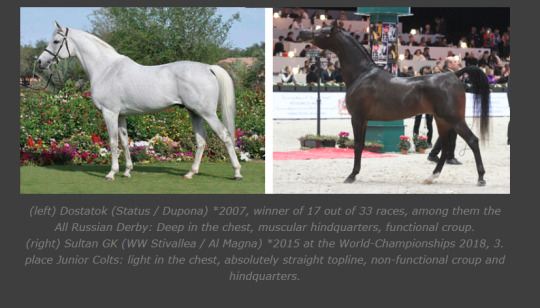
IN THE FOCUS: What dangers do you see in show horse breeding?
A. P.: My job here as a population geneticist is to point out developmental trends. One must be aware of the dangers of where the path leads if we continue in this direction for a long time. I want to come back to the cattle here to show what effects show breeding has, because it really runs in parallel:
Just like in Arabian breeding, in cattle breeders try to achieve a straight topline. The topline must be completely straight, only then it corresponds to the show standard. But what happens when this has been achieved? By selecting for the straight topline, the sacrum descends into the pelvis and makes birth more difficult. The birth ducts become smaller (narrower) because – as desired by breeders – the sacrum lowers.
Poorly developed muscles in the hindquarters – let’s remember again the male calves mentioned at the beginning, which have poor muscles. This is due to the fact that the spinous processes of the sacrum have shortened by 2-3 cm due to incorrect selection. This means that the attachment area for the muscles is lost and this creates these muscle-poor pelvises. And I see exactly this tendency with the show horses.
In cattle breeding, a survey has shown that over 90% of Holstein cattle are asthenics, i.e. tall, narrow animals, while less than 10% are athletics, i.e. the medium-framed type with the broad chest, which could compensate for this in the population. Now you actually want to breed an animal that is as well balanced as possible, but to do this you would have to have a medium-framed, broad stallion/bull available for the vast majority of animals. However, these only make up less than 10% of the population. And this is exactly the direction horse breeding is going in!
The position of the hip joint, in cattle this is called the inverter, meaning the point at which the thigh attaches to the pelvis. The selection for the straight topline tends to shift the hip joint backwards, which means that the animal has to put the hind legs behind the body, which in turn has a negative impact on movement, creates kidney pressure and significantly worsens the resilience of the back.
The extreme “typey” head with dish is, in my opinion, a deformation. Anyone who demands a minimum level of performance from their horse will recognize that a horse with an extreme dish will have trouble breathing. This would require research to understand the exact connections. But we know from dogs and cats that the shortening of the nose does not reduce the amount of mucous membrane material in the nasopharynx. However, this is no longer tight, but rather “wrinkled”, which leads to the familiar wheezing breathing noises. The lower jaw and the ridge are no longer straight, but are curved, which leads to dental problems. Teeth change very slowly in evolutionary terms. The desert Arabians’ teeth are too large for today’s delicate heads and therefore have space problems in their jaws.
The refinement of the head in particular, but also of the entire horse, and the associated lack of gender type in the stallions. This has, for example, effects on the pituitary gland. The pituitary gland controls the entire hormonal process in the organism. It shrinks and you intervene directly in the animal’s hormonal balance and ultimately select against fertility. Here is also an example from cattle breeding: we are increasingly receiving feedback from farmers about weak contractions during birth. What happened here: the hormone oxytocin is responsible for water retention in the tissues before birth and during birth for triggering contractions. All of these natural regulators are significantly weakened by the change in the pituitary gland; the hormone levels are too low. As a result, the contractions during birth mean that the remaining blood is not sufficiently pressed from the placenta via the umbilical cord into the foetus. A normal calf has around 7 litres of blood in its system shortly after birth. If contractions are weak, the calves are usually taken out using mechanical pulling aid and the calves often only have around 3.5 litres of blood in their system and are therefore clearly weak and have to be brought with great effort through the first three weeks of life or even die.
Insufficient depth of the thorax means that the animal has no space for the organs, especially for the heart and lungs. Such animals lack endurance and performance, and the performance of the lymphatic system is significantly reduced.
The middle section is too long – although a feature of the Arabian horse is its short back! Nevertheless, long backs are selected here, which means that the animals have backs that are far too soft and the backs are no longer stable. The long back causes the loins to sink and the animals can no longer walk without pain.
Significant weaknesses in the connective tissue. Selection for early maturity and the associated rapid growth lead to a significant weakening of the connective tissue. We examined this in cattle over long periods of time based on the suspension of the uterus in the abdomen/pelvis and the back formation of the uterus after birth. Swollen legs and swollen hocks are a sign of this weakness in the connective tissue in horses – and these animals are ultimately completely useless as riding horses.
IN THE FOCUS: An important aspect today is size. The Arabian horse, which was imported to Europe 200 years ago, was often smaller than 1.50 m, but today customers demand a horse that should be 10 cm taller. What “dangers” can we expect when our “cultural Arabs” become bigger and bigger?
A. P.: In cattle, we examined what happens when the animals get bigger and heavier and what effects this has. On average, a cow weighs around 600 kg. If we now have 100 kg more body weight, this inevitably means an enormous increase in resources just to maintain the body. I agree with H. V. Musgrave Clark, an English Arabian breeder who valued small horses around 1.45 m and did not use any animal for breeding that was over 1.53 m. He lived in America for several years and worked there as a post rider and his insight was that medium-sized horses always had the greatest endurance. For us, this means that selection for excessive size, i.e. for animals that are over 1.60 – 1.65 m, is not effective. The size must fluctuate freely, which means there may well be animals that are larger, but you shouldn’t select especially for this.
IN THE FOCUS: What could happen next?
A. P.: The state stud farms are dissolving, unfortunately one has to say that. In Russia, Khrenovoye was privatized and Arabian breeding was abandoned. Tersk is also privatized and today has three different breeding programs, racehorses, show horses and “Classic Russian”, although this last group is becoming smaller and smaller. In Poland we have seen that displacement breeding with show horses is taking place. If this goes on for another 10 years, there will be nothing left of the original Polish Arab. But there are also small glimmers of hope. A very interesting project was launched in Spain back in 2003. A breeding value for performance tests was developed; there are different selection levels, including young horse selection, tested sires and elite sires. Finally, I would like to introduce a project that we have launched here in cattle breeding. We have decided to maintain long-term performance breeding because this type of cattle has no chance at all due to genomic selection and breeding value estimation as currently carried out. We therefore founded an association and then looked for cow families that met our criteria for long-term performance breeding. Then we bought bulls from them, i.e. we now have almost 40 bulls in the insemination station, we have our own semen depot, and we use it to supply farmers who are interested in this type of breeding. Something similar could also be applied to the Arabian horse. You would need a Europe-wide breeding platform, and of course you have to think about how you could finance something like that. Then you need much better data collection, research work would have to be done, you would have to network the individual initiatives (like in Spain, see above), record stallion and mare lines to see which ones are at risk, start a survey to find out which frozen semen from older stallions still exist and – and this is very important to me – there needs to be a transfer of knowledge. It would be necessary to offer breeding advice for the next, younger generation of breeders, because otherwise the old hippological knowledge would be completely lost.
IN THE FOCUS: Thank you very much for your clear words and your commitment to preserving the old values in our breed.
The interview was conducted by Gudrun Waiditschka.
44 notes
·
View notes
Text
My 9 years old
She was my second partner. I had already been extremely insistent with my dad to buy him and I knew this was going to be a bigger challenge. I don't know how, but I did it. At that time, I was training with Connie. Such good memories. She made me work very hard. All afternoons in long sessions of flat work, so we could jump on weekends (and some lucky Thursdays). After the practice, she used to invite me to grab a snack at her house, which was right by the stable, while I waited for someone to pick me up. That could be hours. Well spent hours talking about probably horses. God, I loved my afternoons.
I will never forget that one time we were jumping outside. The wind was brutal, and she was very nervous. We could listen how those gigantic trees surrounding me were slowly cracking inside. After lots of bucks, I ended up on the floor. I remember that was one time I felt fear. I looked at Connie, probably looking terrified, and she said to me with her marked Argentinian accent: “Come on, let’s go. Oh, come on! If you’re scared, you should go play tennis.” From then on, I never liked tennis haha.
Thank you, Connie, for everything. Thank you Araucana for making it possible.

7 notes
·
View notes
Text
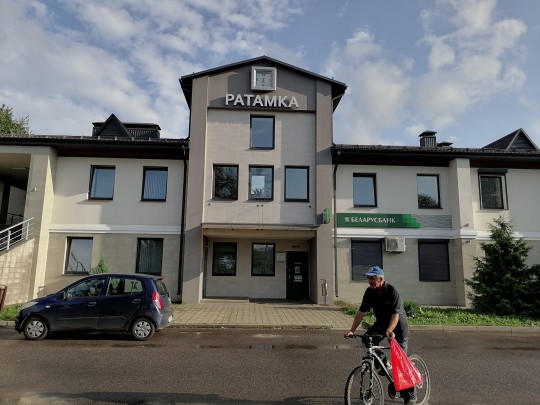
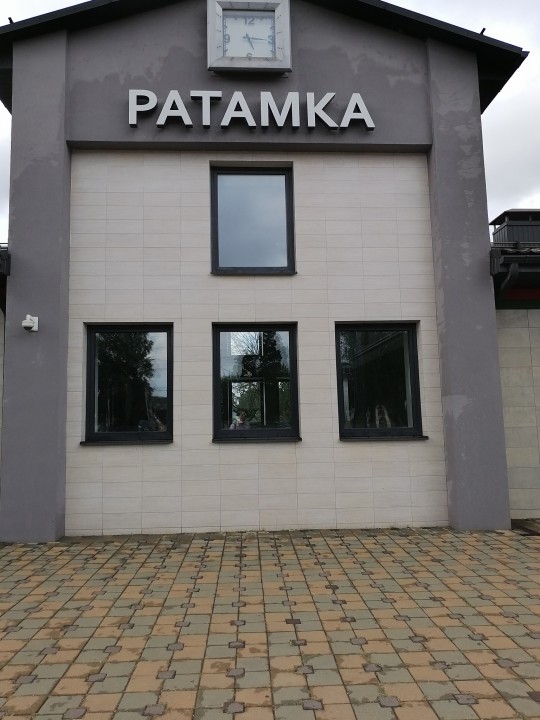

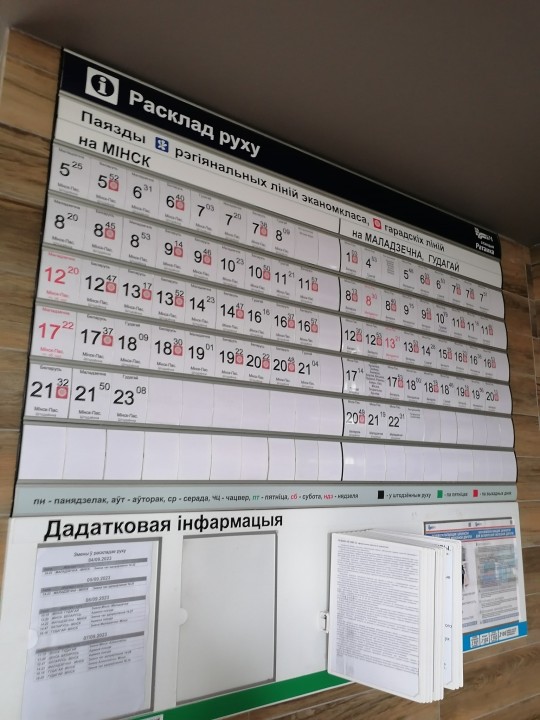
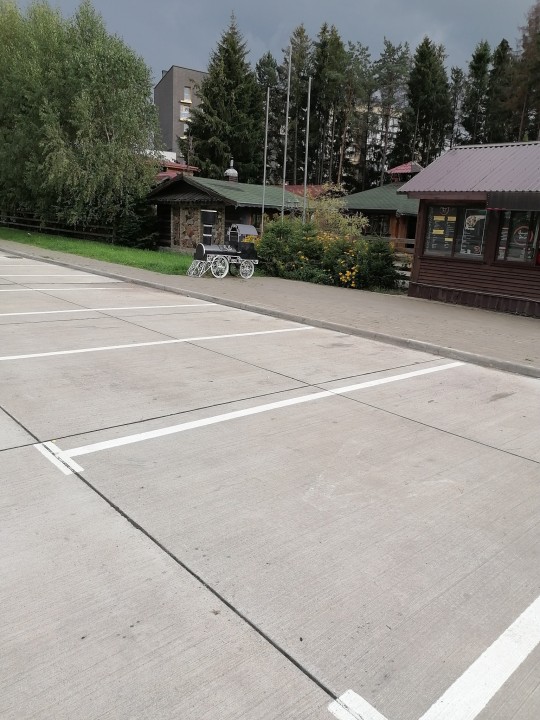


Беларускі цэнтр конегадоўлі
Belarusian horse breeding center
5 notes
·
View notes
Text
racing and breeding

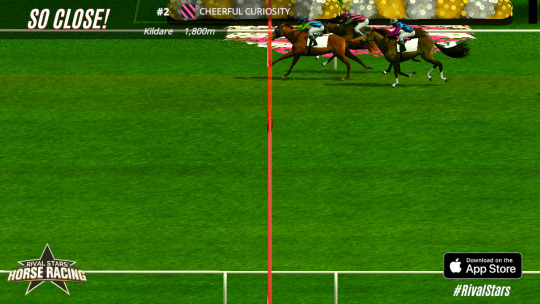
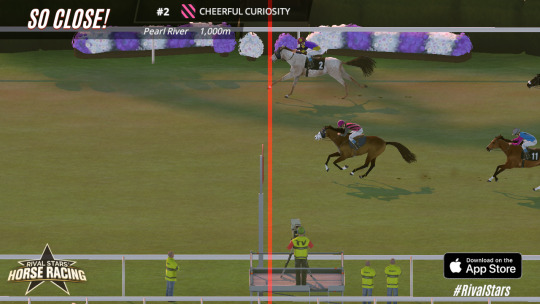

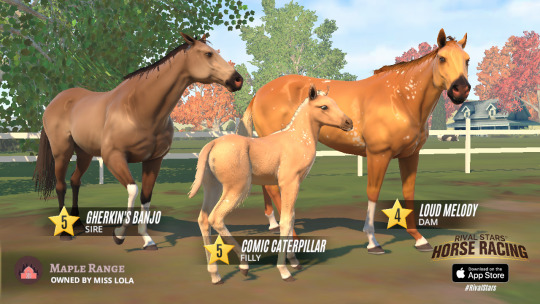

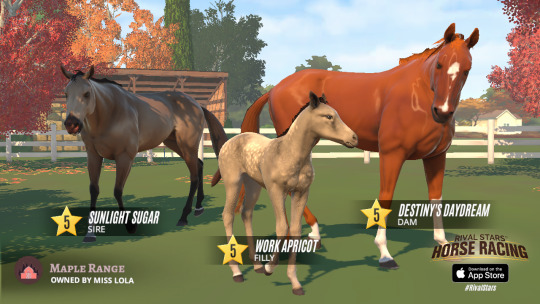


#agirlwithmagicpals#rival stars horse racing#rival stars#experimental breeding#I didn’t necessarily keep every horse#Ripple rule’s bloodline is honestly pretty cool#horse breeding#foal season#game achievements
4 notes
·
View notes
Text
why tf is it so hard to find a nice stud under 16.2hh. Like Did Breeders forget that there are short people that want to ride?? All I want is to breed my mare (provided it is cleared by a vet, and it wouldn't be this year) and end up with a nice 15.2-16.2hh jumper.
2 notes
·
View notes
Text
Horse Breeding Everything You Need to Know
Horse breeding is a fascinating and rewarding activity that has been practiced for thousands of years. In this comprehensive guide, we will explore the basics of horse breeding and provide helpful tips for those interested in learning more about the process. Our goal is to make this information easily accessible to anyone, regardless of their prior experience with horses. Let's dive in and learn all about the world of horse breeding. Read More

#horse breeding#horse breeds#breeding process#mare care#stallion selection#horse genetics#breeding tips
2 notes
·
View notes
Text
Writing Prompt - Great Mind
Jonathan Alocott was a great mind. That’s what he gratefully but playfully not accepted when he was interviewed on the Russell Davison’s Experience podcast which was, according to his PR manager “a great opportunity to develop brand analysis”. If he was too accepting, that self-same PR manager had reminded him it was going to be a detriment to the branding. The branding as he understood it was…
#blog#brand#branding#business#camping#daily prompt#envy#famous#fiction#flash fiction#horse breeding#horse racing#internet#internet famous#meeting#men#negative#podcast#public#Public relations#Relations#report#short story#writing#writing prompt
0 notes
Text
Rosie Mula
This morning, we were awakened by the sound of a little whinny that did not belong to Lady. It seemed that little Miss Rosie Mula had arrived. Obviously, by her surname, you can guess that Rosie is a mule, not a colt. My husband bred Lady to a donkey last year, the date coinciding with one of the annual cabalgatas (community horse rides). He’d been waiting impatiently for three months or more,…
0 notes
Text
pussy from a guy who was "the weird girl" growing up
#ftm nsft#ftm breeding#ftm switch#conceptionacception#this post is lowkey about me#and I don't mean cutesy weird i mean legit weird#like would pretend to be a horse and would pretend to give birth on the playground
6K notes
·
View notes
Text
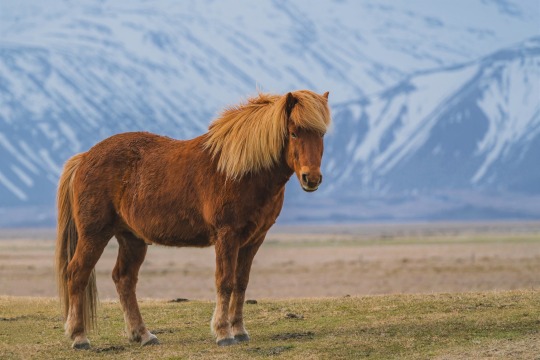
Zaniskari
#zaniskari#zanskari#wikipedia#wikipedia pictures#nature#animals#horse#horses#horse breeds#horse breeding#mountain horse#pony#workhorse#zanskar valley#ladakh#india
51 notes
·
View notes
Text
Hey!
I am just passionate horse lover who dedicates her life to horse riding; to studying it, to the performance and the physical and mental care of horses and riders. Teaching, from my experience, on equestrian sports and the art of Horsemanship.
Here I talk about what sport has been for me and what it means to me today, techniques that have been beneficial in my career working with horses, my own approach to the physical and mental health of riders and horses and other reflections.
I bless my passion.
I am grateful every day.
Thanks for sharing : )

2 notes
·
View notes
Text
Eugenics struck her as a means of social improvement, and she brought Davenport together with Mrs. Harriman, who later said that both her husband's and her father's interest in breeding racehorses had suggested to her that the laws of heredity might also be used for the amelioration of man.
"In the Name of Eugenics: Genetics and the Uses of Human Heredity" - Daniel J. Kevles
#book quote#in the name of eugenics#daniel j kevles#nonfiction#mary harriman#e h harriman#charles davenport#horse breeding#racehorse#heredity#genetics#eugenics#amelioration#social improvement
0 notes
Text
my newer horses











#agirlwithmagicpals#rival stars horse racing#rival stars#mares and foals#baby horse#horse games#horse breeding#horse racing#selle Francis
0 notes
Text
#Horse #GeraldineBrooks #Lexington #BookReview #HistoricalFiction #HorseRacing #AudiobookReview #VikingBooks #PenguinAudio #KindleDeals
I recently read a non-fiction book about the great horse sire, #Lexington, and one of the reviews I read mentioned #Horse by #GeraldineBrooks so I got the #audiobook. I loved the focus of the novel. #Bookreview #viking #penguinaudio #historicalfiction
Kentucky, 1850. An enslaved groom named Jarret and a bay foal forge a bond of understanding that will carry the horse to record-setting victories across the South. When the nation erupts in civil war, an itinerant young artist who has made his name on paintings of the racehorse takes up arms for the Union. On a perilous night, he reunites with the stallion and his groom, very far from the glamor…
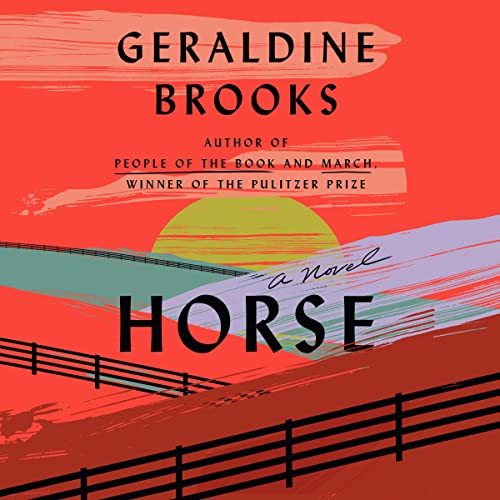
View On WordPress
#Art History#Audiobook#Audiobook Review#Book Review#Darley#Geraldine Brooks#Historical Fiction#Horse#Horse Breeding#Horse Racing#Lexington#Penguin Audio#Pulitzer Prize#Racehorse#The Extraordinary Life and Turbulent Times of America&039;s Legendary Racehorse#Thoroughbreds#Viking Books
0 notes
Text
Horse enthusiasts and breeders alike are constantly on the lookout for unique and fascinating horse breeds that have distinctive characteristics. One such breed is the Abtenauer horse. Named after the valley in Austria where it was bred, the Abtenauer horse is renowned for its excellent balance, graceful movement, and sweet disposition. This breed of horse is not only beautiful but also rare, with a small population worldwide. In this article, we'll explore the history, physical characteristics, temperament, and care of the Abtenauer horse breed
0 notes